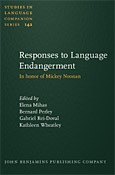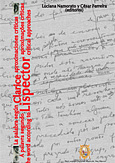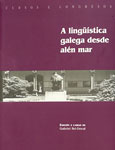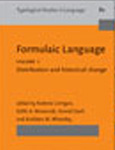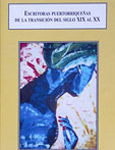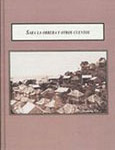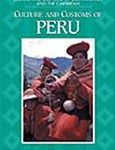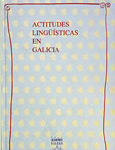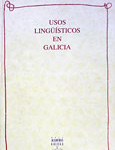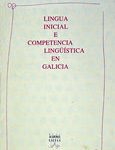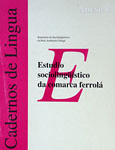Responses to Language Endangerment. In honor of Mickey Noonan: New directions in language documentation and language revitalization (Rei-Doval and Wheatley, co-editors)
More Information
This volume further complicates and advances the contemporary perspective on language endangerment by examining the outcomes of the most commonly cited responses to language endangerment, i.e. language documentation, language revitalization, and training. The present collection takes stock of many complex and pressing issues, such as the assessment of the degree of language endangerment, the contribution of linguistic scholarship to language revitalization programs, the creation of successful language reclamation programs, the emergence of languages that arise as a result of revitalization efforts after interrupted transmission, the ethics of fieldwork, and the training of field linguists and language educators. The volume’s case studies provide detailed personal accounts of fieldworkers and language activists who are grappling with issues of language documentation and revitalization in the concrete physical and socio-cultural settings of native speaker communities in different regions of the world.
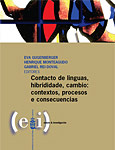
Contacto de linguas, hibrididade, cambio: contextos, procesos e consecuencias (Rei-Doval, co-editor)
More Information
This groundbreaking volume aims to offer innovative views on Galician-Spanish language contact beyond the traditional linguistic paradigms, while also presenting relevant contributions on language contact in the Lusophone world, including European and Brazilian Portuguese.
The main focus of the contributions is placed on the actual language practices of the speakers, the different discourse varieties of oral speech and the linguistic systems as such, in particular the Galician one. Central attention is also paid to language standardization processes and the connected purist attitudes. Some contributions also consider language contact in borderlands, both in terms of transitional areas and as regions favoring dynamic processes of setting differences.
Four decades after the configuration of contemporary standard Galician, and said standard variety now consolidated, the current maturity of Galician Linguistics allows for a discussion of previously hidden or politically incorrect analyses, now addressed openly and in-depth beyond any taboo. Audacious, fearless and detailed scrutinies of linguistic data addressed in this volume aim to envision new strategies and paradigms in Galician linguistics, in connection to the Lusophone, Hispanic, and other surrounding linguistic traditions.
Santiago de Compostela: Consello da Cultura Galega & Instituto da Lingua Galega, 2013
La palabra según Clarice Lispector: Aproximaciones críticas (Ferreira, co-editor)
More Information
Volumen de textos con quince acercamientos en portugués, español e inglés sobre la obra de Clarice Lispector, una de las voces más originales de la literatura brasileña contemporánea. El libro está organizado en cuatro secciones: “Homenajes”, “Novelas”, “Cuentos”, Crónicas” y “Producción Periodística”.
A lingüística galega desde alén mar (Ferreira, co-editor)
More Information
This volume presents an overview of contemporary Galician linguistics studies, including perspectives from both junior and seniors scholars in the Iberian Peninsula and also contributions from Latin American authors (in particular Brazilians) who undertake research on the Galician language. Perspectives such as Sociolinguistics, Ethnolinguistics, Pragmatics, Applied Linguistics, Syntax, Semantics, and History and Dialectology show the vitality of contemporary Galician linguistics and permit the reader to grasp how the traditional emphasis on historical and dialectal approaches is complemented by the current emphasis on socio-pragmatic issues, while Methodology of Teaching Galician as a Second Language is still a field needing further expansion. Comparative approaches, in particular with different varieties of the Portuguese language, are also found in this volume.
Santiago de Compostela: University of Santiago de Compostela, 2009
Formulaic Language (Wheatley, co-editor)
More Information
This two-volume collection highlights the ritualized, repetitive aspect of language, which composes are large portion of spoken and written text. Within linguistic research, the creative and innovative aspects of language have been amply examined, while the conventionalized, pre-fabricated expressions have been given less attention – an imbalance that this book attempts to remedy. The authors of the present book represent a diverse group of international scholars in linguistics and psychology. The language data analyzed are similarly diverse, including languages such as Arabic, Japanese, Polish, and Spanish, and extending to various styles. Volume 1 focuses on the definition of linguistic formulae and on their grammatical, semantic, stylistic, and historical aspects, while Volume 2 explores how formulae are acquired and lost by speakers of a language, in what way they are psychologically real, and their functions in discourse.
Escritoras puertorriqueñas de la transición del siglo XIX al XX: Carmela Eulate Sanjurjo, Ana Roqué y Luisa Capetillo (Bird-Soto)
More Information
This study analyzes representative works by Puerto Rican authors: Carmela Eulate Sanjurjo, Ana Roqué, and Luisa Capetillo, for their treatment of the topic of women. The historical background is the transition associated with 1898, and the conceptual background is that of the roles of women in the Puerto Rican society and nation at the time.
Sara la obrera y otros cuentos: El repertorio femenino de Ana Roqué (Bird-Soto)
More Information
This study analyzes the literary importance of the collection of stories entitled Sara la obrera (y otros cuentos) (1895) by Puerto Rican author Ana Roqué. Its primary focus is the concept of ‘woman’ through a repertoire of female characters that, due to its own variety, challenge the uniform aspect embedded in that concept. By underscoring it literary value and including an edition of this text, this book re-inscribes Sara la obrera (y otros cuentos) in the area of Puerto Rican and women’s literature.
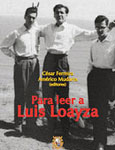
Para leer a Luis Loayza (Ferreira, co-editor)
More Information
La Generación del 50 tuvo una influencia decisiva en el desarrollo de la literatura peruana contemporánea. El enorme talento creativo que se manifestó en la poesía, la novela y el cuento, así como la perspicacia de muchos autores para el comentario crítico, abrieron importantes derroteros para un largo proceso de modernización en nuestras letras. Un caso singular en ese proceso lo constituye, sin duda, Luis Loayza. Nacido en Lima en 1934, la breve lista de títulos que compone su obra se ha distinguido por mantener una sostenida presencia en el canon literario peruano desde hace más de cinco décadas. Con los estudios compilados aquí por César Ferreira y Américo Mudarra, el lector podrá tener un acercamiento más seguro y global a la obra de Loayza.
Lima: Universidad Nacional Mayor de San Marcos-Ediciones del Vicerrectorado Académico, 2009
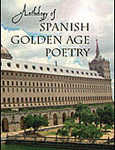
Anthology of Spanish Golden Age Poetry (McCaw, co-editor)
More Information
All of the poems featured in this collection are masterpieces of Spanish Golden Age literature, but it must be noted that, for the sake of brevity, not all of the poetic masterpieces from the Golden Age have been included, and not all of the period’s worthy poets are represented. The goal, rather, is to introduce students to several short and medium‐length poems, and to help students improve vocabulary, grammar, cultural knowledge, reading strategies, and listening skills while studying these poems.
Newark, DE: Cervantes & Company, 2007
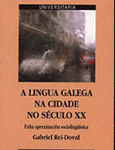
A lingua galega na cidade no século XX: Unha aproximación sociolingüística (Rei-Doval, author)
More Information
A lingua galega na cidade no século XX: Unha aproximación sociolingüística offers an approach to the social situation of the Galician language in urban settings. The book undertakes an in-depth analysis of the sociolinguistic situation of Galician cities and focuses on the main indicators of its vitality: oral and written skills, mother tongue, habitual language usage, family interactions, and language usage in the school and at work. The book also undertakes an analysis of language change, both intragenerational and intergenerational, from an original perspective. Besides an analysis of the urban setting as a whole, it also offers a comparative analysis of Galicia’s seven main cities. The book provides important interpretative aspects, particularly within the field of family interactions, as this section deals not only with the main tendencies but also with the causes and motivations of language shift. Similarly, the book presents the main trends of the historical evolution of the Galician language throughout the 20thcentury, thus constituting an excellent tool to understanding the social history of the Galician language in the urban environment, a decisive factor for predicting future developments and understanding of its vitality as a language.
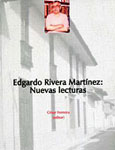
Edgardo Rivera Martínez: Nuevas lecturas (Ferreira, editor)
More Information
Edgardo Rivera Martínez es un escritor en el más puro sentido de la palabra. Así lo anota César Ferreira en la presentación a esta compilación de comentarios críticos sobre la obra del escritor jaujino. A ello se suman también textos del propio autor estudiado y una serie de entrevistas concedidas por él a lo largo de los últimos años.
Lima: Fondo Editorial Universidad Nacional Mayor de San Marcos, 2006.
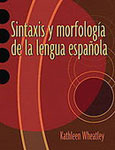
Sintaxis y morfología de la lengua española (Wheatley)
More Information
Sintaxis y morfología de la lengua española is designed to help advanced students of Spanish deepen their understanding of the syntactic and morphological structures of Spanish and how these structures differ from those in English. Through an examination of the nominal, pronominal, adjetival, adverbial, and verbal systems as a whole, students will be able to analyze the structure of words, phrases and sentences, and understand how the components of these elements relate to one another. In addition to this focus on the structure of the language, the text also includes descriptions of both historical change and dialectal variation in the language.
Culture and Customs of Peru (Ferreira, co-author)
More Information
The breadth of Peru’s culture from pre-Columbian times to today is surveyed in this one-stop reference. Modern Peru emerges as an ethnically divided nation progressing toward social integration of its heavily Indian and Hispanic population. Ferreira and Dargent, native Peruvians, illustrate how the diverse geography of the country—the Andes, coast, and jungle—has also had a role in shaping cultural and social expression, from history to art. Further exploring the influence of Spanish colonialism and its modern blending with Indian traditions, this volume covers the legacy of the Incas and Machu Picchu, providing an authoritative overview of how the citizenry and major cultural venues, such as the church, media, and arts, have evolved. A chronology and glossary supplement the text.
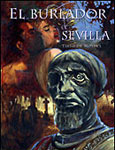
El burlador de Sevilla (McCaw, editor)
More Information
Newark, DE: Cervantes & Co., 2003
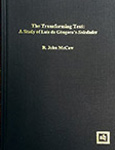
The Transforming Text: A Study of Luis de Góngora’s “Soledades” (McCaw)
More Information
This book studies the didactic function of metamorphosis and mutability in Góngora’s most celebrated work. Analysis of the poem’s literary and iconographic intertexts shows that the poem articulates a meaningful philosophy of life, degeneration, death, and rebirth.
Potomac, MD: Scripta Humanistica, 2000
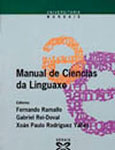
Manual de Ciencias da Linguaxe (Rei-Doval, co-editor)
More Information
This book constitutes the first and so far only Handbook on Language Sciences published in the Galician language. Different specialists examine fifteen main topics and fields in Language Sciences, ranging from language origin in the human species, or Zoosemiotics, to Phonetics, Phonology, Morphology or Syntax, and also including Psycholinguistics, Linguistic Anthropology or Sociolinguistics as areas of focus. The volume favors a plural view of language phenomena, so that this is an excellent source of information for students and scholars in the Galician universities. It also includes a comprehensive series of activities aimed for pedagogical purposes: i.e., each of the fifteen chapters presents a series of practical exercises, a list of additional annotated readings, as well as a useful bibliography, which includes handbooks of general linguistics, dictionaries, encyclopedias, important journals, etc. In the final section of the book, the reader will find an extended glossary of terms, and indexes of authors, and languages. The editors of this volume intend to stimulate the debate concerning Galician linguistics, thus contributing to a further expansion and development of Language Studies in Galicia and beyond with a hope that this process will also result in the expansion and revitalization of the Galician language.
Vigo: Xerais, 2000
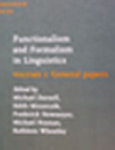
Functionalism and Formalism in Linguistics (Wheatley, co-editor)
More Information
This two-volume collection brings together the viewpoints of linguists from opposing theoretical approaches — functionalism and formalism — in order to determine to what extent these approaches really differ from each other and to what extent the approaches complement each other. Volume 1 includes papers discussing the two basic approaches to linguistics, while Volume 2 consists of case studies which draw upon the strengths of both approaches and thus help to bridge the gap between the two camps.
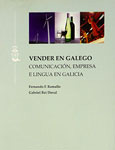
Vender en galego: comunicación empresa e lingua en Galicia (Rei-Doval, co-author)
More Information
An in-depth study on the viability of the Galician language in advertising and commercial relationships from both quantitative and qualitative points of view, Vender en galego surveys the theories on language attitudes and then offers an analysis of the indicators of the sociolinguistic profile of the Galician population based on life habits, consumer goods purchases and media influence. That is, the volume connects studies on language attitudes with research on advertising and consumer practices. In this innovative approach, a description of the multiple dimensions of language in commerce is undertaken, focusing both on the general attitudes toward the Galician language in this setting and the behavioral parameters regarding the presence of this language in shopping, advertising in the media and similar situations. Part of the methodological innovations provided by this volume is the usage of simulations for commercials, product brochures, labeling or shop windows. In addition to this sophisticated quantitative survey, a qualitative approach is also provided, including in-depth interviews with business leaders in Galicia and Spain concerning their opinions on language policies in their companies and in public and private sectors of the Galician society. As part of the main conclusions of this volume, an important finding stands out: the usage of the local Galician language may help to distinguish oneself from the competitors, enlarge the target market, and increase customers and sells. This is the first survey documenting this social phenomenon in the Galician society, thus highlighting social shifts and suggesting manners in which to foster consumption and increasing market shares.
Santiago de Compostela, Consello da Cultura Galega: 1997
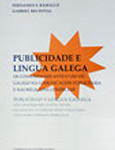
Publicidade e lingua galega: os consumidores ante o uso do galego na comunicación publicitaria e nas relacións comerciais (Rei-Doval, co-author)
More Information
This bilingual Galician-Spanish volume surveys the success of actual Galician language usage in advertising and commercial relationships, trying to answer to what extent using the local language discredits the product advertised in that language or if, on the contrary, it may actually help to boost sells. This ground-breaking study shows an overall necessity to reformulate the discourse on language use in Galicia, in particular in advertising and the commercial arena, due to changes in the contemporary society whereby the Galician language has acquired an important commercial value, thus connoting values such as quality or reliability. The outcomes of this research show clearly how private sector business leaders need to reformulate their old commercial strategies in Galicia based on Spanish-only policies and incorporate the local language in order to stimulate consumption, increase market shares and contribute to economic growth and social progress in Galicia.
Santiago de Compostela: Consello da Cultura Galega, 1996
Actitudes lingüísticas en Galicia (Rei-Doval, co-author)
More Information
This book is the third in the trilogy on the sociolinguistic situation of the Galician language called Sociolinguistic Map of Galicia. This 1990s groundbreaking research project is the most comprehensive quantitative survey on any minority language in the world. In its third volume, a complete analysis of language attitudes, prejudices, beliefs and opinions toward the Galician-Spanish bilingual situation is undertaken, including domains such as school, administration, work or interpersonal relationships, among others. This thorough study considers factors such as usefulness of the language, its use and transmission to future generations, connection between language and identity, and also the endurance of old prejudices towards languages as such, its users and the aesthetic values associated to them. Similarly, the importance and appreciation for the local language by its society are examined, as well as the now important topic of similarity vs. distance between the language of the media and the vernacular variety. A complete series of maps and analyses on these variables and factors in different socio-geographical regions is also included in each chapter.
Usos lingüísticos en Galicia (Rei-Doval, co-author)
More Information
This second volume of the ground-breaking survey Sociolinguistic Map of Galicia was undertaken in the 1990s by the author, in part, as a member of the Galician Academy of Language’s Seminar of Sociolinguistics. This book analyzes language use in the Galician-Spanish bilingual setting in northwestern Spain. As in the other two volumes of this trilogy, both a study of the Galician situation as a whole and a comparative analysis of the different socio-geographical sectors –including rural, semi-rural, semi-urban and urban settings in all Galician counties– are included. Language use is analyzed in terms of habitual language –oral and written–, family interactions, school usage, language at work, and language usage in other communicative situations (with neighbors, friends, trusted people, a doctor, governmental offices, or with a Galician vs. a Spanish speaker, among others). Besides levels of language use, the authors also studied the factors conditioning language use, including age, education, social class, profession, habitat, mother tongue or language transmission patterns. A historical account of both monolingual and bilingual usage of Galician and Spanish is offered for the period from the late 19th century to the late 20th century, using apparent time as well as real time methodologies and approaches. Factors influencing language choice and language choice in families, school and the work arena are equally reviewed in the analyses.
Lingua inicial e competencia lingüística en Galicia (Rei-Doval, co-author)
More Information
This volume opens the trilogy composing the Sociolinguistic Map of Galicia, a research project undertaken in the 1990s by Dr. Rei-Doval, and others, as a member of the Royal Galician Academy of Language’s Seminar of Sociolinguistics in Galicia, the northwestern-most corner of the Iberian Peninsula. This research team completed the most comprehensive quantitative survey undertaken on any minority language in the world, interviewing over 2% of Galicia’s population with a questionnaire composed of almost 200 items. This robust database was used to analyze in this volume crucial issues in macrosociolinguistic research such as mother tongue, the four language skills –listening, speaking, reading and writing– and language acquisition ambience (family, work, school, friends, or neighbors). Language skills are analyzed not only for the speaker but also for their parents and grandparents’ generations. This volume, as well as the other two composing the Sociolinguistic Map of Galicia, offers three different interpretive modes: maps and graphics visually summarizing the main features of the different phenomena, an in-depth analysis and interpretation of those phenomena –both from a global perspective and in each demographic sector analyzed– and finally a detailed reading of all tables and figures provided, including the interaction with social variables such as age, habitat, gender or social class, among others.
Overall, this survey highlights the importance of cultural factors and social background on language use, and demonstrates the importance of a parallel consideration of intra- and intergenerational interpretations of language shift. The survey also confirms the increase in language skills, in particular the written ones, among younger generations of Galician speakers who have been given the opportunity to attend Galician language classes in their public school system.
Estudio sociolingüístico da comarca ferrolá (Rei-Doval, co-author)
More Information
This publication summarizes the main results of a pilot-study undertaken in 1991 in the Ferrol county of Galicia, the northwestern-most corner of the Iberian Peninsula. This volume, followed in immediate years by the three-volume acclaimed Sociolinguistic Map of Galicia (SMG), is a landmark in Galician Sociolinguistics, a field formerly lacking overall quantitative perspectives. Having been commissioned by the regional Galician Government to the Royal Galician Academy of Language, the SMG gave rise to the creation of its Seminar of Sociolinguistics, to which Dr. Rei-Doval belonged as a research fellow in the 1990s while the project was completed. This present volume, besides serving as a pilot-study for the SMG, also undertook research on language areas such as language skills (both oral and written), as well as on mother tongue, social uses at work and in other social situations, and even language exposure, language uses and preferences at school –i.e. Galician vs. Spanish–. A final section analyzing language beliefs, attitudes, prejudices, sociolinguistic consciousness and opinions concerning the future of both languages, as well as on language revitalization agencies, close the book.
